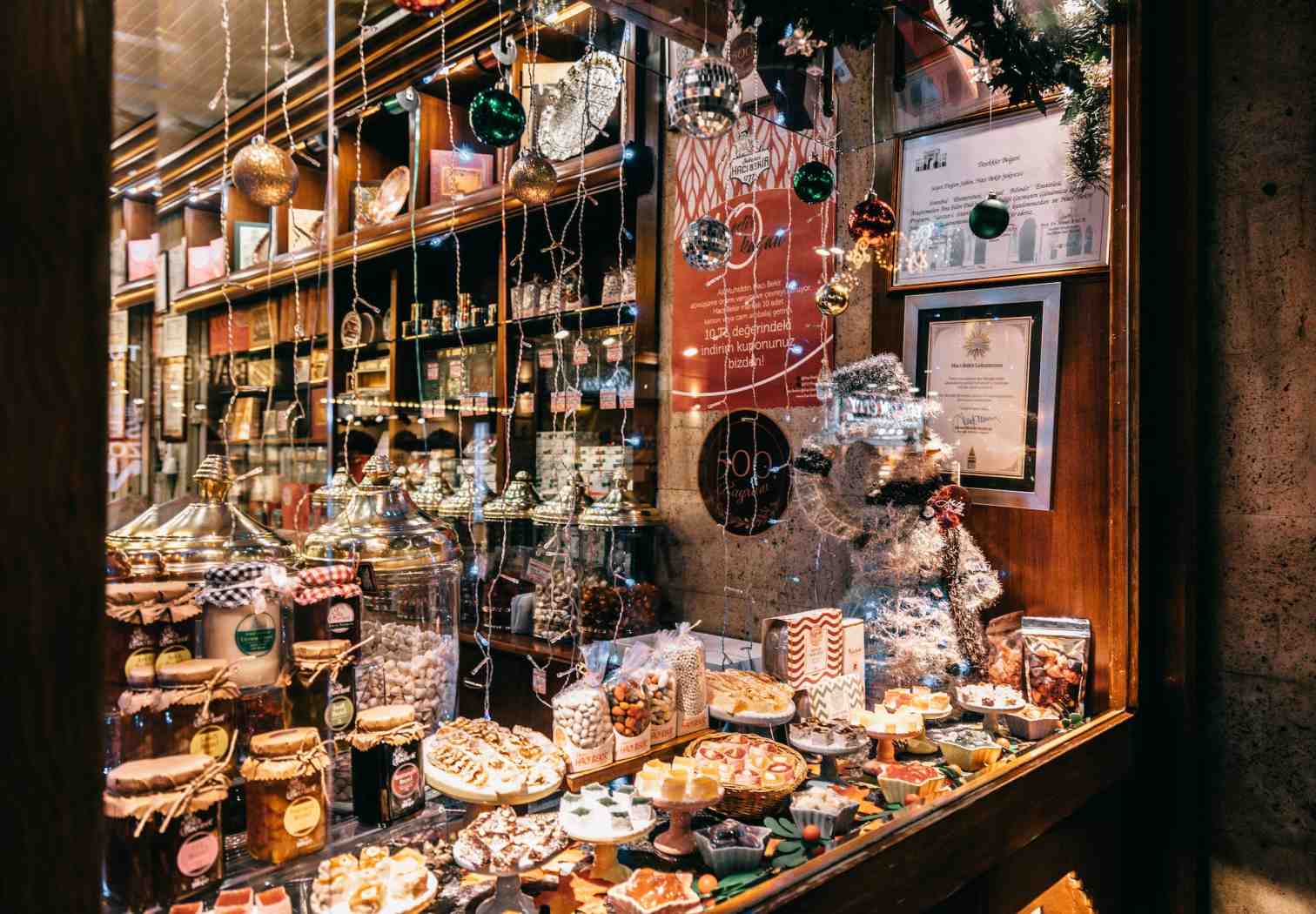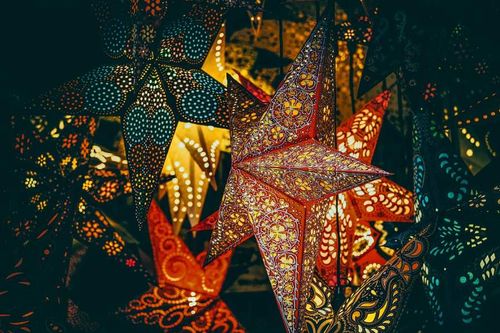The Magic of Weihnachten: Christmas Traditions in Germany
Germany is known for its charming Christmas markets, intricate decorations, and long-held holiday customs. The German people celebrate Weihnachten, or "Christmas" with great joy and pageantry every year during the dark, cold winter. Experience the festive atmosphere and origins of many beloved traditions practiced around the world.
Introduction to Christmas in Germany
Christmas in Germany is a magical time. Town squares glow with twinkling lights strung between decorative wooden stalls. The sweet scent of Lebkuchen cookies and mulled wine wafts through the brisk air as locals and tourists alike wander to the tune of festive music. Families gather to bake traditional treats, decorate evergreen trees with handcrafted ornaments, attend beautiful holiday concerts, and exchange thoughtful gifts.
The German people's dedication to beloved customs and symbols captures why Weihnachten is such a wondrous, meaningful occasion for people across generations. Discover when the holiday spirit awakens here, what touches of home make it memorable, and how old folklore still influences celebrations today.
The Origins of Christmas Traditions in Germany
Many people do not realize that some of the most prominent Christmas decor we see worldwide originated in Germany. Evergreen wreaths, Christmas trees, glass ornaments, and Advent calendars were either invented or popularized there and remain integral parts of German Weihnachten festivities.

Decorating Evergreens
Long before Christmas was associated with evergreen fir trees, ancient Germanic people used evergreen plants and wreaths as a symbol of hope during winter solstice holidays. They brought evergreens into their homes in mid-winter as a reminder that plants would grow again soon and spring’s arrival was not far off. This pagan tradition transformed in the 16th century when devout Christians began decorating evergreen trees to celebrate Christmas inside their homes in Germany, with the triangular shape representing Christianity and candles initially used to symbolize Jesus Christ’s light. The tradition quickly spread across Europe and transformed into brightly lit Christmas trees trimmed with decorative ornaments as electricity became widespread.
Ornaments
The first decorative glass Christmas ornaments originated in the German state of Thuringia in the mid-1800s. They were hand-blown by skilled glassmakers and built upon the tradition of edible ornaments made of cookies or fruits. Creative glass Christmas tree ornaments became extremely popular exported goods, allowing the custom to gain popularity around the world. Most recognizable ornaments today like colored balls and detailed figurines stem from original German glass ornament designs.
Advent Calendars
Germans take the countdown to Christmas Day very seriously with the use of Advent calendars. The custom began in the 19th century as parents made chalk lines for children to mark off days until Christmas or lit candles each day. The modern Advent calendar containing little doors came about in the early 1900s, often filled with small religious verses, prayers, or chocolate treats leading up to December 25th. It’s now a beloved childhood tradition across the globe.
The German Christmas Markets
Among the most famous of German Christmas traditions is the bustling Weihnachtsmarkt filled with local artisans, or Christmas Market in English. These outdoor fairs overflow with holiday charm - vendors sell handmade ornaments, children sip hot cocoa, friends gather around fire pits, and musicians liven the mood. The first "December Market" appeared in Germany during the Middle Ages allowing craftsmen opportunity to sell wares before indulgent feasting began. Over centuries these quaint markets have retained their appeal, morphing into hotspots of community cheer and welcoming travelers. They now pop up in November through Christmas Day in nearly every town's central square.

The Magic of the Christmas Markets
Part of locals’ excitement each year is wonderfully kicking off the festive season by attending the area Christmas markets. Children cling to paper cones filled with roasty chestnuts or observe demonstrations as wooden toymakers carve spinning tops by hand. Teens gossip over mugs of mulled wine and gingerbread hearts, rosy cheeks matching their mittens. Three generations of families pose together for photos in front of towering evergreens glittering with twinkle lights. Dotted with stardust, the Christmas markets feel dreamlike - as if anything could happen over this mug of Kinderpunsch (children's punch).
The Glowing Fairytale Towns
From late November, German town centers begin glowing as festive street displays and creative lights are strung between buildings to dazzle visitors. LED stars adorn lampposts while angels float between archways. Silvery tinsel and giant Snowflakes made of crystal reflect rainbow prisms under streetlights, contrasting with 15-foot nutcrackers standing guard along the shopping avenues.
Locals bundle up throughout December evenings to leisurely wander these glittering pedestrian walkways with cheerful holiday tunes echoing through alleyways. Friends meet at corner cafés serving seasonal indulgences like stollen bread pudding or hot spiced cider. Carollers harmonize on Frosty winter corners as shop windows beckon displaying intricate nutcrackers with sword-wielding kings or plush teddy bears wearing handknit scarves. Ducking into hidden bookshops, pharmacies, and boutiques you find miniature winter villages under glass domes, nativity scenes, and tiny evergreens dripping Swarovski crystals. The storybook charm envelops you into the magic of Christmas as if stepping through the wardrobe into Narnia!
Bringing Weihnachten Home
Beyond the twinkling markets and festive lights, classic German Christmas customs mainly focus on family, faith, treats, and keeping cozy against the cold. Many traditions now practiced internationally stem from old-world Germanic ways of honoring midwinter while welcoming the light during Advent.
The Glistening Tannenbaum
In Germany the adorned evergreen tree is called Weihnachtsbaum or Christbaum, meaning "Christmas tree". Traditionally families gather on Christmas Eve Day to decorate the Tannenbaum (fir tree) with apples, nuts, family heirloom ornaments, gold-foil stars and flickering candles that reinforce the purpose of celebrating - Jesus Christ being the light of the world. Modern families now use electric lights but still honor a living evergreen fir tree to display gifts beneath on Christmas morning. Many religious families still light the white candles adorning their Christmas trees on Christmas Eve before a special dinner, singing Silent Night.
Wintery Cuisine
December's icy weather and long nights influence traditional recipes Germans indulge in throughout the holidays. Gingerbread, fat sausages, potato dumplings with gravy, and hearty casseroles warm tummies while extended families reconnect around the fireplace. And no German Christmas meal is complete without holiday staples like Stollen fruit cake, spiced coffee or hot chocolate, and sweet Lebkuchen ginger cookies decorated with colorful icing and candy pieces!

Seasonal Sweets
Two desserts still remain icons of German Christmas - Lebkuchen and marzipan Stollen. As early recipes for gingerbread cookies emerged in the 13th century, German monks perfected candied almond Stollen fruitcake in Dresden that remains beloved today. From soft baked Lebkuchen hearts to hand-rolled marzipan shaped into fruits, these Christmas sweets signify the season while sharing affection. They are still gifted in decorative tins to teachers, postal carriers, and dear friends leading up to the big day.
The Celebratory Spirit
The German people have mastered hygge-style comforts during the midwinter holidays indoors. In the weeks approaching December 25th, family time spent decorating, baking, singing and exchanging stories around the fire increases. Twinkling candles line each window sill as children leave shoes outside bedroom doors to be filled with candy and small gifts from St. Nikolaus on December 5th. With so many long-held traditions still at the core of celebrations, the sentimental significance and magic of friends and family at Weihnachten lives on.
Common Questions About German Christmas Traditions
Here are answers to 10 frequently asked questions about Christmas traditions and celebrations in Germany: When does the Christmas season start in Germany? The Christmas spirit awakens after November 11 in Germany. Outdoor markets open mid-November with Glühwein and sweets. By December 1st Advent calendars help count down 24 days until Christmas eve.
What do Germans call Christmas? Germans call Christmas “Weihnachten”, pronounced VYE-nach-ten. It translates as “sacred or holy nights” in English.
Do Germans have Advent calendars? Yes! Germans invented the modern decorative Advent calendar in the early 1900s. Most have pockets or flaps hiding a festive picture, poem, piece of chocolate or toy for each of the 24 days leading up to Christmas.
What do German Christmas markets sell? Christmas markets sell regional sweets like stollen cakes, roasted nuts, spices, and chocolate confections as well as traditional decor and ornaments like nutcrackers, incense smokers, wood carvings, and glassware. Locals also find gloves, hats, candles, and holiday cards.
What food do Germans eat on Christmas? Classic German Christmas dinner features roast goose or duck, sweet and savory bread dumplings, and hearty vegetables like red cabbage. Families also bake spiced stollen fruitcake and gingerbread cookies for dessert.
Do Germans exchange gifts on Christmas Eve or Day? Germans open gifts on Christmas Eve evening with close family after attending church services. Christmas day is focused on elaborate meals and quiet gatherings. Children sometimes receive more gifts from family over both days.
Do Germans decorate Christmas trees? Yes! Decorating evergreen fir trees at Christmas originated in Germany. Traditional trees feature homespun straw stars, carved wooden angels and hearts, tinsel garlands, candles, silver bells, and heirloom glass ornaments often passed down generations.
What is a common German Christmas carol? Some classic German Christmas songs many children learn are “O Tannenbaum" (O Christmas Tree), "Stille Nacht" (Silent Night) and "O du fröhliche" (O how joyful). Choirs also perform music from famous German composers.

Who brings German children gifts? While Santa Claus does appear in some Christmas celebrations now, the traditional gift-giver is der Weihnachtsmann (the Christmas man). He wears long robes, has a flowing white beard and carries a staff. Parents also attribute small gifts to kind neighbor St. Nikolaus who visits on December 5th when children leave out shoes to be filled that night.
Why are Christmas markets so popular? The charming open-air German Christmas markets oozing with holiday spirit have long brought friends together through the cold months. Hearty food, sweet treats, warm drinks, live music, and one-of-a-kind gifts under twinkling lights create magical atmospheres that locals and tourists adore. More Questions People Often Ask About Christmas in Germany:
Why are nutcrackers so popular at German Christmas? Nutcrackers originated centuries ago in Europe's Alpine forests for cracking nuts. Legends say nutcrackers gained magical powers to protect families year-round. Since medieval times, Germans have exchanged intricately carved nutcrackers at Christmas to symbolize good fortune & scare away evil spirits!
What Christmas traditions are German? Many Christmas traditions we love originated in Germany centuries ago - Advent calendars, Tannenbaum trees, glass ornaments, Stollen fruitcake, gingerbread houses, and Christmas markets all stem from old German customs still celebrated today.
What do you leave out for St. Nikolaus in Germany? Children eagerly polish boots & leave them outside bedroom doors on December 5th hoping St. Nikolaus will fill them with candies, fruits, and small presents when he stops by that night. Carrots are sometimes left beside shoes as a treat for his horse companions!
Do Germans hide a pickle ornament on the tree? Some German families do hide glass pickle ornaments deep on the Tannenbaum then compete to see who finds it first on Christmas morning, as it symbolizes extra good fortune in the coming year. But the pickle tradition is likely American in origin.
How do you say Merry Christmas in Germany? The German phrase for Merry Christmas is Fröhliche Weihnachten, pronounced "FROYE-li-kuh VYE-nach-ten" - you'll hear it everywhere during beautiful German Christmas celebrations!

Summary
Christmas in Germany oozes festive charm from glowing holiday markets and snow-dusted pine forests to tables piled high with seasonal delicacies. Locals honor many biblical traditions with Advent wreaths and calendars while displaying evergreen trees symbolic of life and hope. The authentic Weihnachtsmarkts showcase German artistry and beliefs through intricate wood carvings, hand-blown glass ornaments, and saintly figurines passed down generations. Christmas Eve candles illuminate families gathered to sing beloved carols emphasize the meaning behind all merriment - celebrating Jesus Christ's light and love during the darkest time of year. From fairy tale villages that inspired Disney to customs we now treasure worldwide, Germany's steadfast Christmas spirit continues warming hearts and homes each holiday season.





